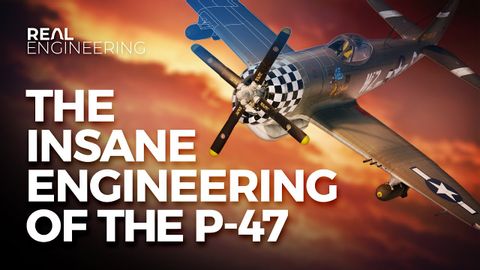P-47 Thunderbolt 的疯狂工程(The Insane Engineering of the P-47 Thunderbolt)
joey joey 發佈於 2021 年 06 月 02 日  沒有此條件下的單字
沒有此條件下的單字- adj.巨大的;大而重的;大量的;厚重的;大規模的
- n. (c./u.)通道;接近或使用的機會;訪問
- v.t.訪問
- v.t./i.存取(資料);訪問
US /ˈplɛnti/
・
UK /'plentɪ/
- pron.豐富;很多
- n. (u.)大量;充足;很多
- adv.足夠地;充分地
- adj.很多的
US /ædˈvæntɪdʒ/
・
UK /əd'vɑ:ntɪdʒ/
- n. (c./u.)優勢;優點;利益
- v.t.利用;佔便宜

